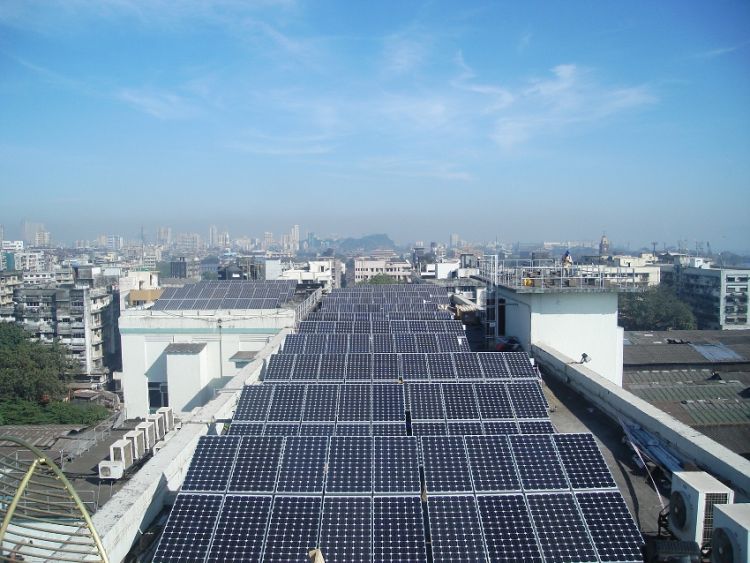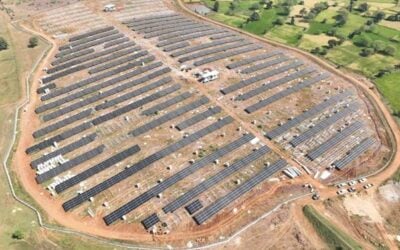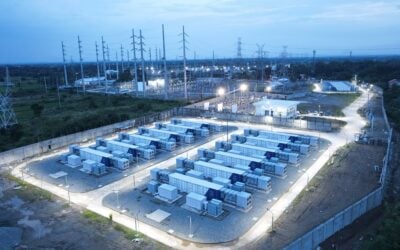
A clarification of the status of energy storage systems (ESS) in India’s power sector, issued by the government’s Ministry of Power, has described the various technologies as “essential” to achieving national renewable energy goals.
The new document, published on Saturday (29 January), aims to resolve questions asked by “various stakeholders,” about the status of energy storage, the ministry’s joint secretary Ghanshyam Prasad wrote.
Enjoy 12 months of exclusive analysis
- Regular insight and analysis of the industry’s biggest developments
- In-depth interviews with the industry’s leading figures
- Annual digital subscription to the PV Tech Power journal
- Discounts on Solar Media’s portfolio of events, in-person and virtual
Of particular note has been the topic of its definition as generation, transmission or distribution.
India has already reached an installed capacity of 150GW of renewable energy, leaving it only a short distance to hitting its 2022 target of 175GW, while ahead of the country lies a 2030 target of 500GW — including 450GW of wind and solar.
“To meet this target, it is pertinent to plan for optimum utilisation of resources and selection of [the] right resource mix to meet the projected energy demand of the country maintaining energy security of the country,” Prasad wrote.
Energy storage systems technology, including battery energy storage systems (BESS), pumped hydro energy storage (PHES) or other technologies like green hydrogen or green ammonia storage will be essential in order to integrate large volumes of renewable energy, the letter said.
The country’s Central Electricity Authority (CEA) has modelled that this need could equate to around 27GW/108GWh of energy storage by 2030. The CEA has begun a process of creating rules to enable participation of energy storage and demand response in ancillary services markets to balance the grid.
Other measures to stimulate both downstream and upstream investment have already been taken by the government. These include the announcement of gigawatt-scale tenders for energy storage to support transmission networks and support solar PV integration, to a plan to incentivise domestic production of advanced chemistry cell battery manufacturing.
Private actors have also expressed their belief in the potential of energy storage in the country: Tata Power, awarded India’s largest solar-plus-storage project to date late last year, told this site that the technical need for energy storage means the sector is a “promising” one.
International energy storage technology company Fluence has said it will form a joint venture (JV) targeting the Indian market with independent power producer (IPP) ReNew Power later this year.
Clarification details:
In light of the policy and technical impetus for energy storage deployment, alongside those supply and demand-side stimulation measures, it appears some definition of the role the various technologies can play was sought after.
Addressed to stakeholders including all state government energy and power secretaries, generation, distribution and transmission companies (gencos, discoms and transcoms) and various government agencies, the clarification addressed the following points:
-Energy storage systems are part of the power system, as defined in India’s 2003 Electricity Act.
-ESS can be used either as standalone assets or in complement to generation, transmission and distribution (T&D). Status will be accorded based on the area of application to which each system is directed.
-ESS can therefore be considered a generator, part of the grid or the wider electricity network and can be developed, owned, leased and operated by generating company, T&D licensee, system operator or standalone energy storage service provider.
If owned and operated by — and colocated with — a generating station, transmission licensee or distribution licensee, it will assume the same legal status as the owner entity.
If owned and operated by a generating station or distribution licensee, but not colocated with it, it will have the same legal status as its owner, but will be treated “at par with a standalone ESS” for the purposes of scheduling, dispatch “and other matters”.
-ESS developers/owners may sell, lease or rent out all or part of their energy storage resource to utilities engaged in generation, transmission or distribution. They could also sell, lease or rent to one of India’s regional Load Despatch Centre facilities which coordinate bulk electricity network activities across the country.
The owner can still utilise all or part of the energy storage system themselves to buy, store and sell electricity.
-Standalone energy storage system activity will be delicensed at par with generation companies. Standalone ESS owners and/or developers that seek to operate their system must register with India’s Central Electricity Authority and provide capacity and location information, and must comply with CEA rules on safety and other matters. CEA will verify capacity details.
-Standalone energy storage systems will be granted electricity network connectivity under Electricity Rules issued last year, pertaining to transmission system planning, development and recovery of inter-state transmission charges.
The update was welcomed by India power sector expert Debmalya Sen, who kindly shared it with Energy-Storage.news. Sen also said that today’s forthcoming Union Budget 2022-2023 from the government is expected to also contain a lot of news for the clean energy space.






